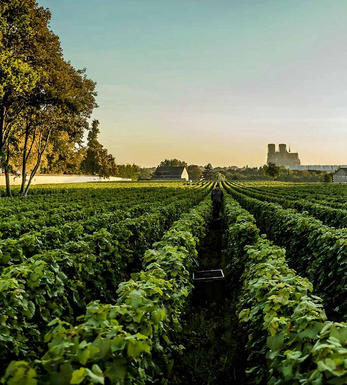
Critics reviews
Stephan Reinhardt - 30/06/2016
About this WINE

Lanson
Lanson is one of the oldest Houses in Champagne having been established in 1760 by Francois Delamotte. After a very brief tenureship under LVMH Lanson was bought (minus the vineyards) by Marne et Champagne.
Lanson has had, shall we say, a rather colourful history. One thing, however, has stayed constant, namely the House's commitment to a style which involves the suppression of the malolactic fermentation with a concomitant purity and honesty evidenced in its flavour profile. Now, with the quality of the fruit improved, the ownership secure and the ageing régime lengthened, the results are impressive indeed. Orchard fruit with a steely, flinty backdrop, then hints of sherbet, meringue and biscuit, a generous mousse, and a rich finish.
Its Non Vintage Black label Brut Champagne is a blend of 50% Pinot Noir, 35% Chardonnay, 15% Pinot Meunier.

Brut Champagne
Brut denotes a dry style of Champagne (less than 15 grams per litre). Most Champagne is non-vintage, produced from a blend from different years. The non-vintage blend is always based predominately on wines made from the current harvest, enriched with aged wines (their proportion and age varies by brand) from earlier harvests, which impart an additional level of complexity to the end wine. Champagnes from a single vintage are labelled with the year reference and with the description Millésimé.
Non-vintage Champagnes can improve with short-term ageing (typically two to three years), while vintages can develop over much longer periods (five to 30 years). The most exquisite and often top-priced expression of a house’s style is referred to as Prestige Cuvée. Famous examples include Louis Roederer's Cristal, Moët & Chandon's Dom Pérignon, and Pol Roger's Cuvée Sir Winston Churchill.
Recommended Producers : Krug, Billecart Salmon, Pol Roger, Bollinger, Salon, Gosset, Pierre Péters, Ruinart

Champagne blend
Which grapes are included in the blend, and their proportion, is one of the key factors determining the style of most Champagnes. Three grapes are used - Pinot Noir, Chardonnay and Pinot Meunier.
26% of vineyards in Champagne are planted with Chardonnay and it performs best on the Côtes des Blancs and on the chalk slopes south of Epernay. It is relatively simple to grow, although it buds early and thus is susceptible to spring frosts. It produces lighter, fresher wines than those from Burgundy and gives finesse, fruit and elegance to the final blend. It is the sole grape in Blancs de Blancs, which are some of the richest long-lived Champagnes produced.
Pinot Noir accounts for nearly 40% of the plantings in Champagne and lies at the heart of most blends - it gives Champagne its body, structure, strength and grip. It is planted across Champagne and particularly so in the southern Aube district.
The final component is Pinot Meunier and this constitutes nearly 35% of the plantings. Its durability and resistance to spring frosts make the Marne Valley, a notorious frost pocket, its natural home. It ripens well in poor years and produces a soft, fruity style of wine that is ideal for blending with the more assertive flavours of Pinot Noir. Producers allege that Pinot Meunier lacks ageing potential, but this does not deter Krug from including around 15% of it in their final blends.



Buying options
Add to wishlist
Description
There is something about the combination of Lanson and the passing of time which beguiles; it’s not all to do with their suppression of the malolactic fermentation although this clearly plays a part in ageing process. The Extra Age is a multi-vintage blend, the vintages in question being in this instance 1999, 2002 and 2003.
With 60% Chardonnay sourced in great vineyards of the Côte de Blancs ( Chouilly, Avize, Oger and Vertus) and 40% Pinot Noir from the finest vineyards in Vernazay and Bouzy, then a very generous five year elevage, this is a wine of outstanding pedigree. The nose is mature and attractive with brioche and winter pear to the fore; then comes a palate which is rounded and rich, the hints of honey and spice underlining the age and quality, which is outstanding.
(Simon Field MW, BBR Buyer)
wine at a glance
Delivery and quality guarantee